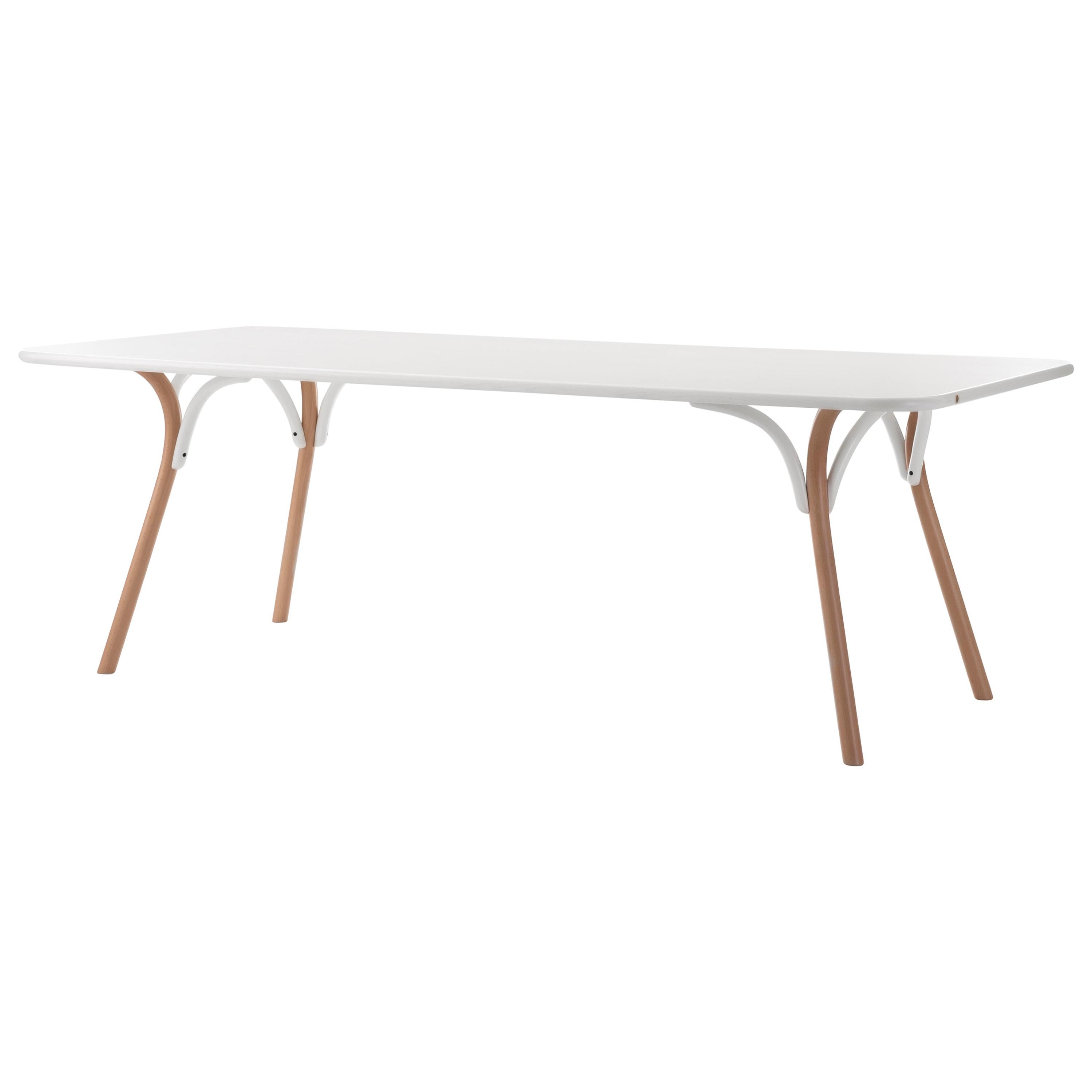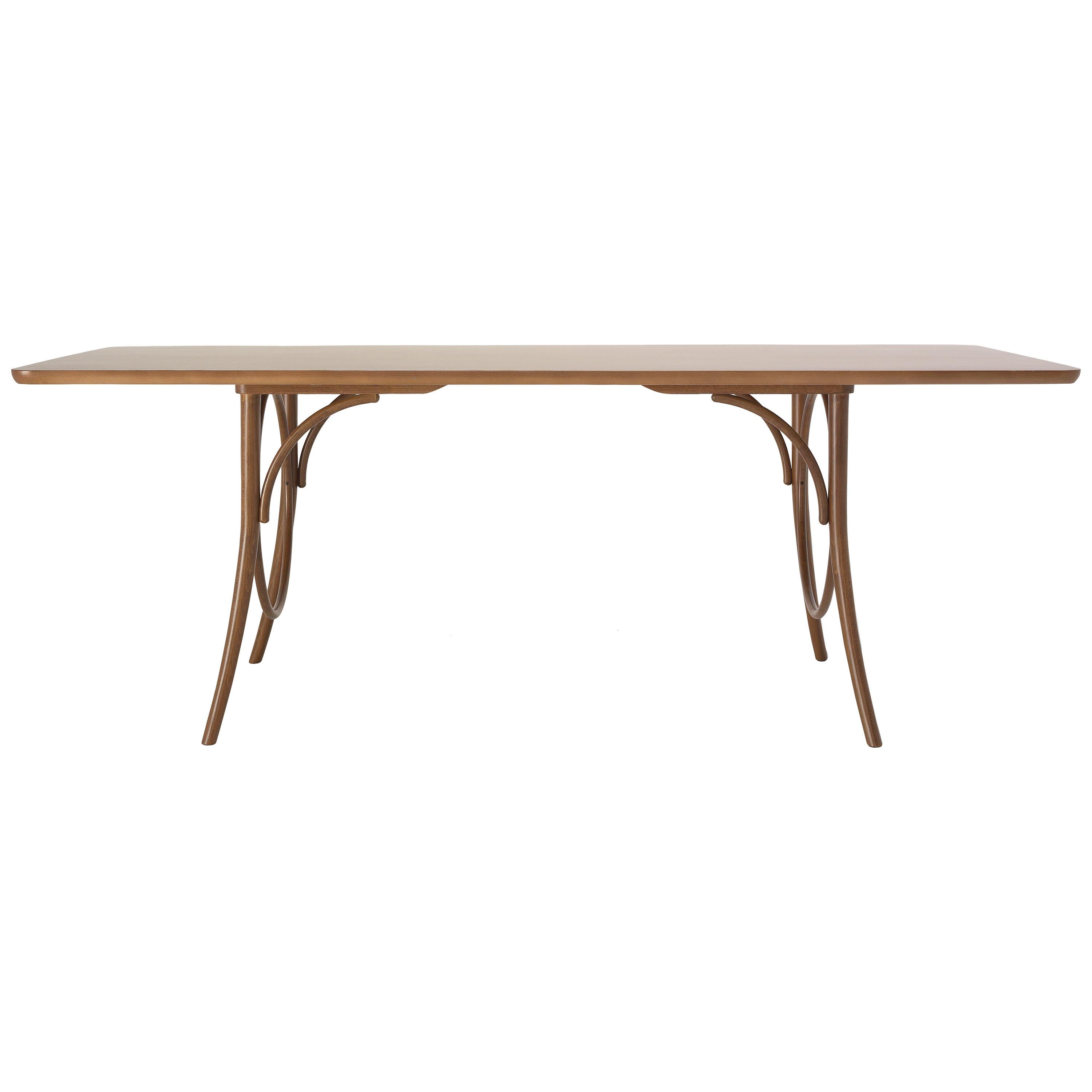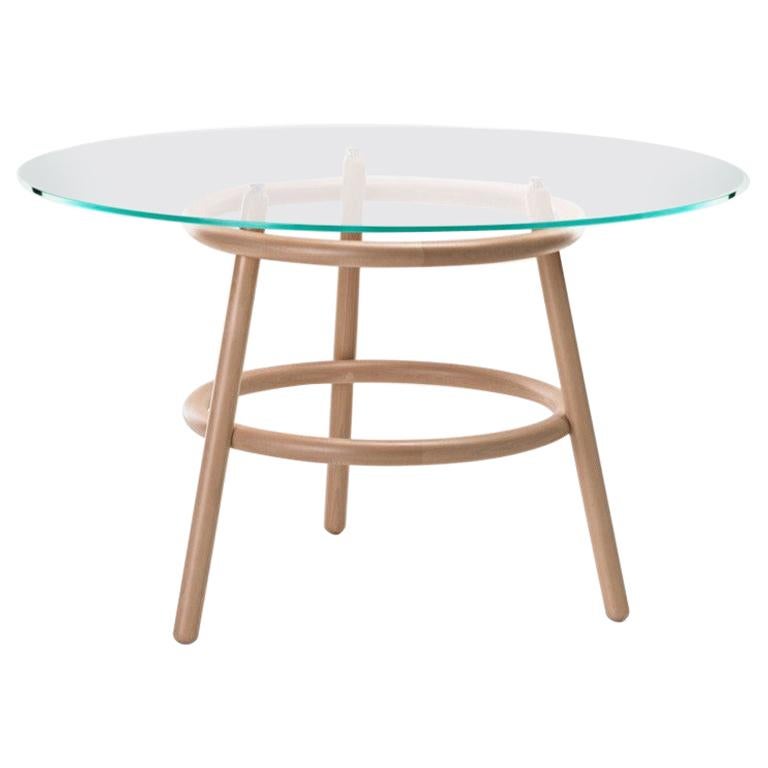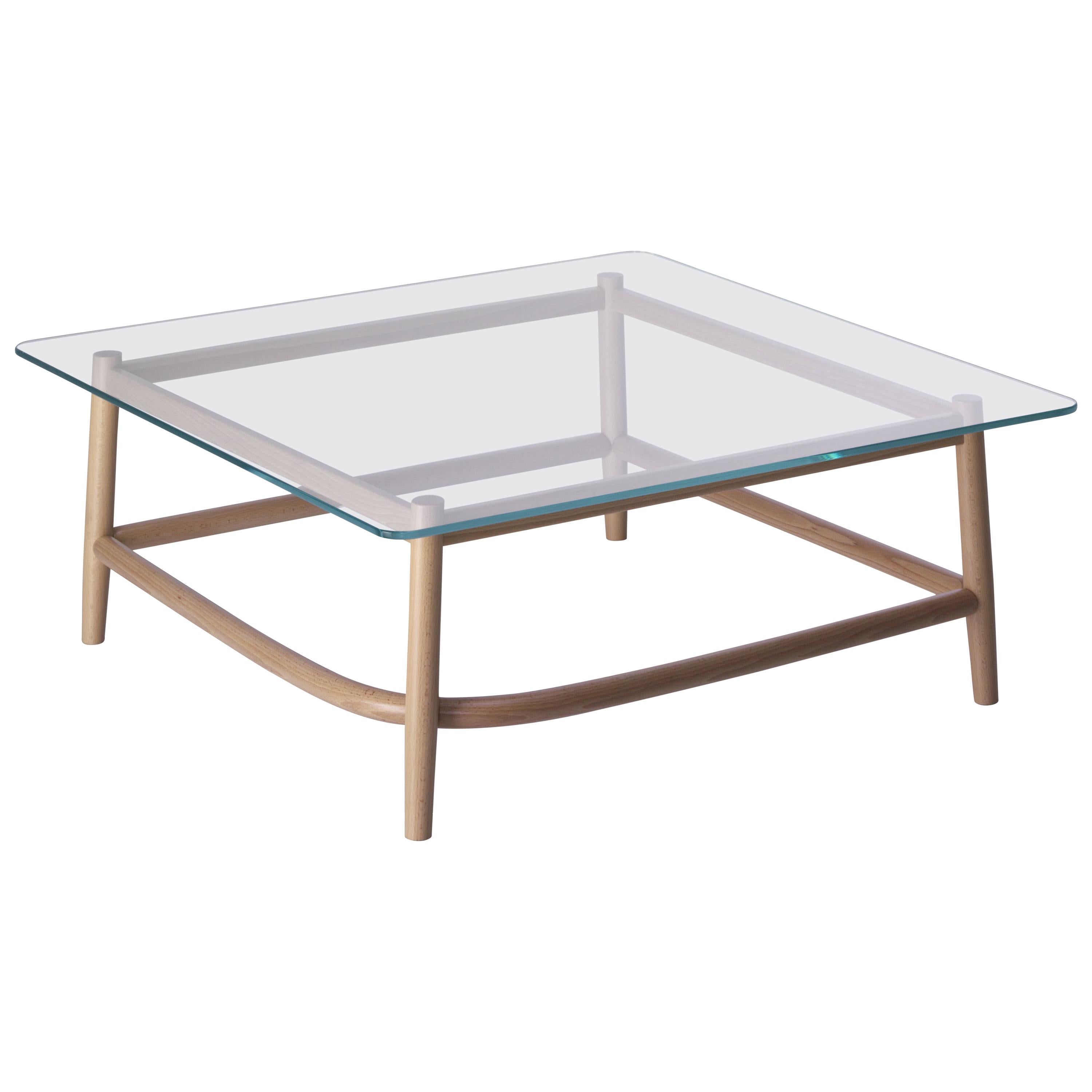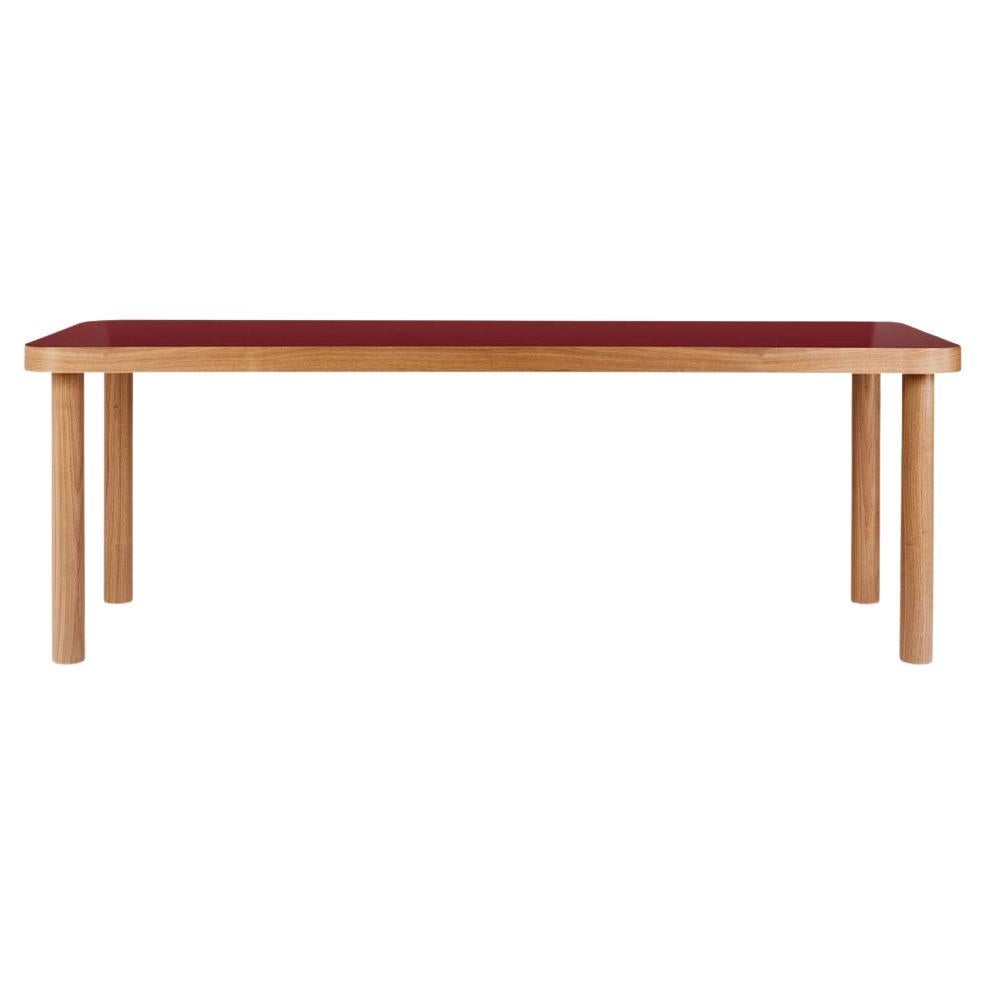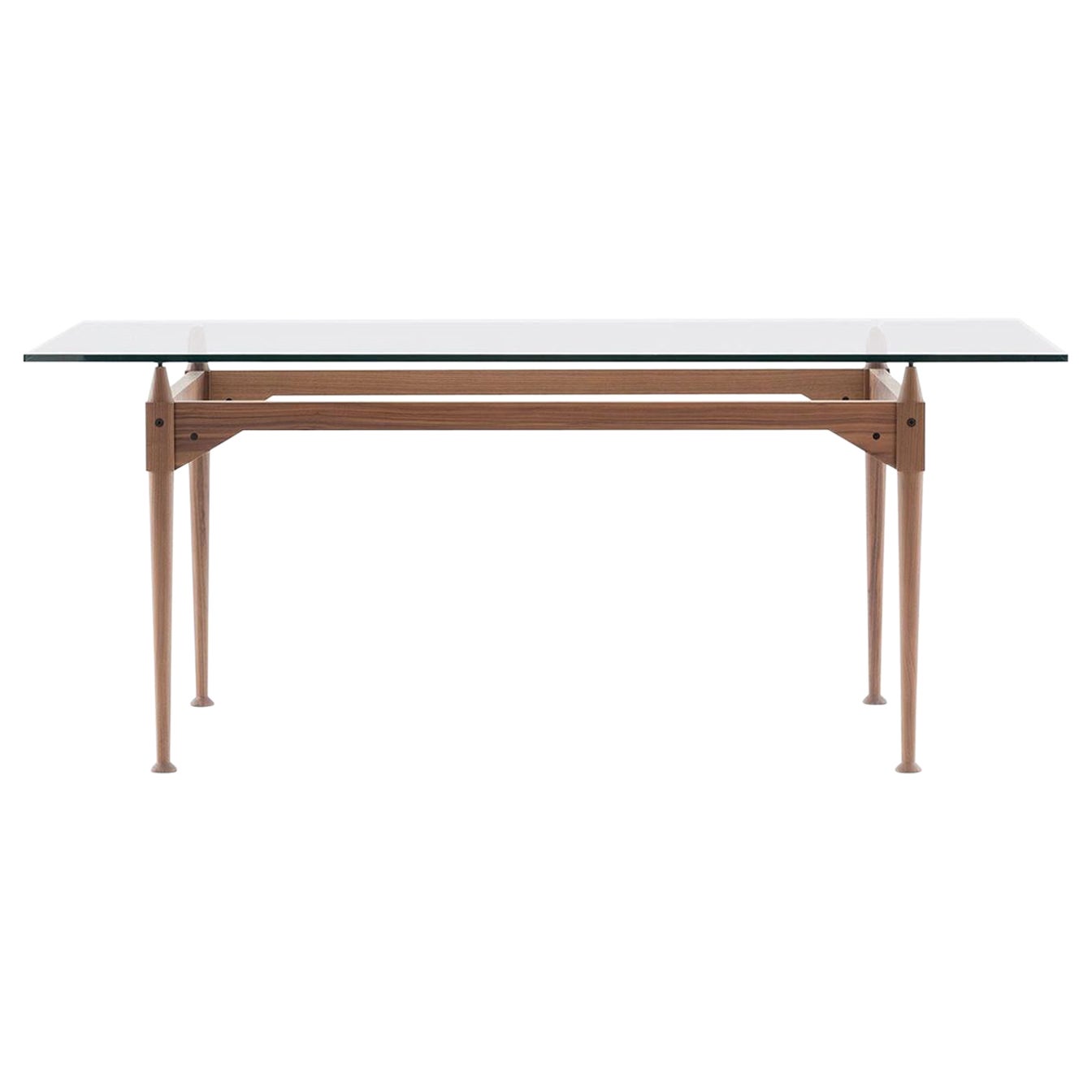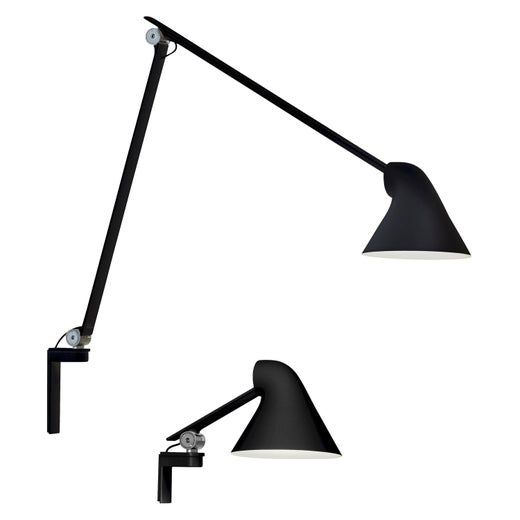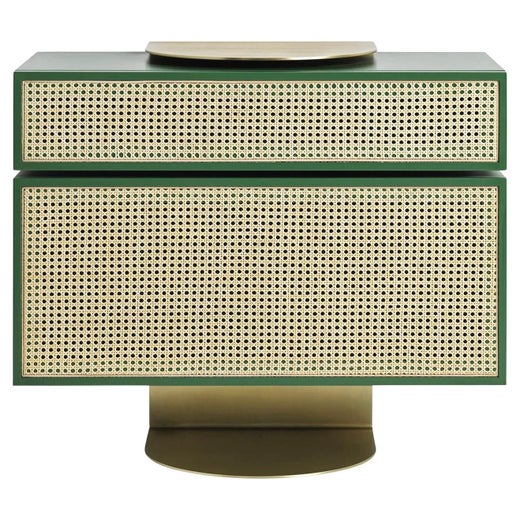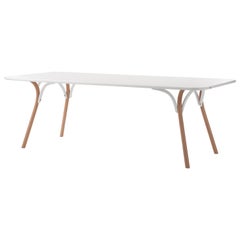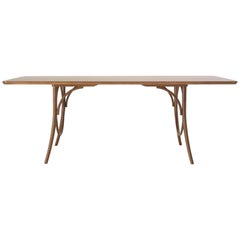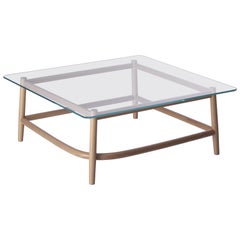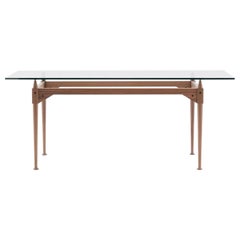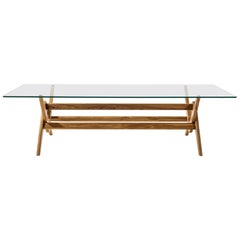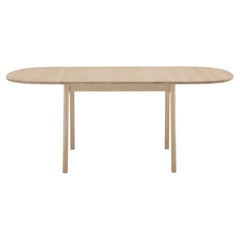Gebrüder Thonet Vienna GmbH Single Curve Dining Table in Beech with Glass Top
About the Item
- Creator:Gebrüder Thonet Vienna GmbH (Manufacturer),Nendo (Designer)
- Dimensions:Height: 29.1 in (73.92 cm)Width: 86.6 in (219.97 cm)Depth: 37.4 in (95 cm)
- Style:Modern (In the Style Of)
- Materials and Techniques:
- Place of Origin:
- Period:
- Date of Manufacture:Contemporary
- Production Type:New & Custom(Current Production)
- Estimated Production Time:8-9 weeks
- Condition:
- Seller Location:Brooklyn, NY
- Reference Number:Seller: TVNDINVTR1stDibs: LU1639222481392
Nendo
Some pieces of contemporary furniture try to command attention with statement-making forms, while others aim to seduce with pared-down, meticulously detailed perfection. Nendo is remarkable in its ability to blend these two seemingly disparate qualities in objects that are simultaneously provocative and beautiful in their simplicity. And this ability has made the Tokyo- and Milan-based studio one of the most sought-after design firms of the moment.
Nendo is best known for its expansive portfolio of furniture and accessories designed for such luxury makers as Baccarat, Bisazza, Boffi, Cappellini, De Padova, Emeco, FLOS, Foscarini, Fritz Hansen, Kartell, Lasvit, Louis Poulsen, Moroso and Swarovski, as well as for the one-off and limited-edition pieces presented by galleries like New York’s Friedman Benda. But its range is much broader.
Nendo’s full oeuvre runs the gamut from product packaging for such brands as Coca-Cola and Kenzo to large-scale urban-planning and architecture projects, including Tenri Station Plaza CoFuFun, which populated the space in front of a Japanese rail terminal with a series of conical pavilions, turning it into a sort of urban playground for people of all ages.
Whatever the undertaking, the studio’s approach remains the same: embodying lighthearted insights into the human experience in minimalist forms and details. Nendo’s Gaku collection, for the legendary lighting company FLOS, for instance, is based on a simple cup-shaped lamp in a square frame, which can be personalized and changed over time by adding magnetic accessories, including a bookend, mirror, vase and bowl, making it almost as playful as a grown-up dollhouse.
The now iconic Cabbage chair, Nendo’s most recognizable design, offers a whimsical way to deal with trash from the fashion industry. A fat roll of discarded paper used in the production of Issey Miyake’s pleated fabric is simply cut down the middle and its individual layers peeled open to create a seat.
It wasn’t always evident that chief designer and Nendo cofounder Oki Sato would spend his life finding subtle surprises in tables, floor lamps and chairs. He was born in Toronto, where his father worked for Pioneer Electronics, and moved with his family to Tokyo when he was 11. He studied architecture at Waseda University but found the program a little too narrow and rigid for his liking.
After graduating, in 2002, he traveled with friends to the Salone del Mobile in Milan and stumbled into the biggest aha moment of his life: He realized that architects could do more than design buildings — they could also design furniture, lighting and other objects. And the architects at the fair appeared to be enjoying plenty of creative freedom while doing so.
Upon returning to Tokyo, he founded Nendo, whose name means “flexible clay” in Japanese, with his classmate Akihiro Ito, the firm’s managing director. In 2005, they established a second office, in Milan. Within a few years, Nendo had become an omnipresent name at the fair that had inspired them.
Nendo’s wares have been acquired by such institutions as New York’s Museum of Modern Art and Cooper Hewitt, Smithsonian Design Museum; London’s Victoria and Albert; and Paris’s Musée des Arts Décoratifs and Centre Pompidou.
Find Nendo furniture on 1stDibs.
Gebrüder Thonet Vienna GmbH
For more than 180 years, Thonet — or Gebrüder Thonet — has produced elegant and durable tables and cabinets as well as chairs, stools and other seating that wholly blur the lines between art and design. Widely known as a trailblazer in the use of bentwood in furniture, the European manufacturer has reimagined the places in which we gather.
Noted for his skill in parquetry, German-Austrian company founder Michael Thonet received an invitation from Austrian Chancellor Prince Metternich to contribute Neo-Rococo interiors to the Liechtenstein City Palace in Vienna. The Boppard-born Thonet had honed his carpentry skills in his father’s workshop, where he carried out experiments with plywood and modified the Biedermeier chairs that populated the studio.
Thonet’s work for the chancellor raised his profile, and the cabinetmaker gained international recognition, including at London’s Great Exhibition of 1851, which featured works created by members of the Arts and Crafts movement as well as industrial products of the day. Thonet showed a range of furniture at the fair and won the bronze medal for his bentwood chairs. He incorporated his family’s company, the Thonet Brothers, with his sons in 1853.
Bentwood furniture dates as far back as the Middle Ages, but it is the 19th-century cabinetmaker Thonet who is most often associated with this now-classic technique. Thonet in 1856 patented a method for bending solid wood through the use of steam, and from there, the bentwood look skyrocketed to furniture fame. The works of renowned mid-century modern designers such as Alvar Aalto, Arne Jacobsen, and Charles and Ray Eames that put this technological advancement to use would not be as extensive or celebrated were it not for the efforts of the pioneering Thonet.
Considered the world’s oldest mass-produced chair, Michael Thonet’s ubiquitous Chair No. 14 demonstrated that his patented bentwood technology made it possible to efficiently produce furniture on an industrial scale. Now known as the 214, it won the German Sustainability Award Design for 2021, a recognition of the company’s commitment to environmentally responsible production.
Often called the Coffee House chair — the company’s first substantial order was for a Viennese coffeehouse — the No. 14 remains an icon. Thonet originally designed the chair in 1859, and it is considered the starting point for modern furniture.
The bentwood process opened doors — there were investments in machinery and new industrial processes, and the business began mass-producing furniture. By the end of the 1850s, there were additional Thonet workshops in Eastern Europe and hundreds of employees. Michael Thonet’s reputation attracted the attention of notable architects including Otto Wagner, Marcel Breuer and Ludwig Mies van der Rohe.
The No. 14 was followed by the No. 18, or the Bistro chair, in 1867, and the 209, or the Architect’s chair, of which Le Corbusier was a fan. (The influential Swiss-French architect and designer used Thonet furniture in his Pavillon de l’Esprit Nouveau at the 1925 International Exposition of Decorative Arts in Paris.)
Thonet’s chair designs also appeared in artwork by Toulouse-Lautrec, John Sloan and Henri Matisse in his Interior with a Violin Case. The noteworthy Thonet rocking chair remains a marvel of construction — in the middle of the 19th century, Michael produced a series of rockers in which the different curved parts were integrated into fluid, sinuous wholes. Thanks to Thonet, the humble rocker acquired something unexpected: style. It was captured in the paintings of Pablo Picasso, Pierre-Auguste Renoir and James Tissot.
Thonet is currently split into global divisions. Thonet Industries U.S.A. was acquired in 1987 by Shelby Williams and joined the CF Group in 1999, while the Thonet brand in Germany is owned by Thonet GmbH.
Find antique Gebrüder Thonet furniture on 1stDibs.
- ShippingRetrieving quote...Shipping from: Linden, NJ
- Return Policy
More From This Seller
View All21st Century and Contemporary Austrian Modern Dining Room Tables
Wood
21st Century and Contemporary Austrian Modern Dining Room Tables
Wood
21st Century and Contemporary Austrian Modern Tables
Wood
21st Century and Contemporary Austrian Modern Stools
Wood
21st Century and Contemporary Austrian Modern Dining Room Tables
Wood
21st Century and Contemporary Austrian Modern Stools
Wood
You May Also Like
2010s Italian Mid-Century Modern Dining Room Tables
Glass, Wood
2010s Italian Mid-Century Modern Dining Room Tables
Glass, Wood
2010s Italian Mid-Century Modern Dining Room Tables
Glass, Wood
21st Century and Contemporary Danish Mid-Century Modern Dining Room Tables
Oak
21st Century and Contemporary Danish Mid-Century Modern Dining Room Tables
Beech
2010s Danish Bauhaus Dining Room Tables
Chrome
Read More
Nendo Susses Out the Silly Side of Minimalist Decor
The Tokyo- and Milan-based studio tackles design projects from light fixtures to interior environments, product packaging to urban planning.
Kazuyo Sejima’s Flowering Tree Blooms Year-Round
The brilliantly simple design turns a modest bouquet into a major statement.
